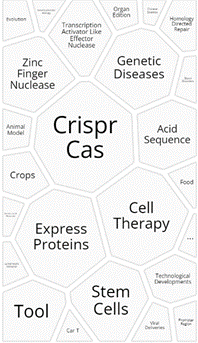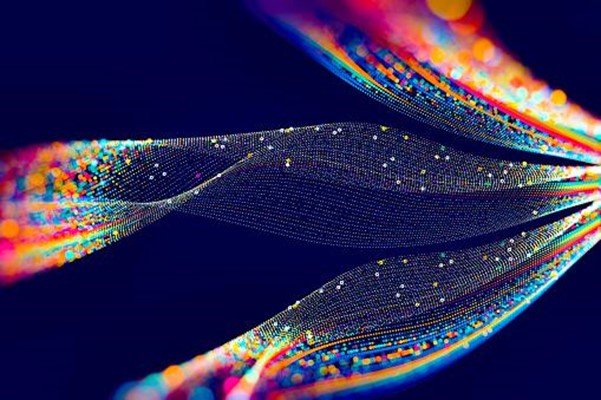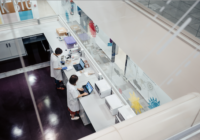
According to the London School of Economics and Political Science (LSE), the average cost of developing a new drug is $1.3B. Despite the high costs, this is less than half of the previous estimations at $2.8B. Open innovation and decentralizing R+D+i are playing a major role in terms of reducing the costs of drug discovery.
However, it’s not all about the money, it’s also about the time factor. From the discovery of a drug to its commercialization, it usually takes 10 to 15 years. Historical milestones have been achieved in the development of vaccines. During the first months of the current pandemic multiple alternatives were studied, all of them aimed at looking for existing drugs and repurpose them to help fight the new virus as fast as possible.
Therefore, in the drug discovery process knowledge and context have a great impact and both converge in one word: technology.
Technology: the great ally in drug discovery

Today, there are myriad technologies that can be applied to improve the whole drug discovery process:
1. Artificial intelligence
AI accelerates exponentially the development of new drugs. From assessing the right candidates, to identifying the right chemical compounds or improving the manufacturing process, AI can help every step of the way. Aria Pharmaceuticals is one of the pioneers in this field. Since 2014 they have been using AI to discover and develop novel small molecule therapies. Through mathematical models they analyze what molecules can be used for other treatments in hard-to-treat-diseases.
SOM Biotech is another startup paving the way by using their own proprietary AI-based technology. With the data obtained they can define and optimize each one of the parameters needed for the development of the project. This results in reducing time in half and cutting costs in the whole process while actually increasing the rate of success.
Molecular simulations can also help model drug-target interactions entirely. Companies like NVIDIA, a technological company focused on computing and gaming are also taking part in this matter. Now collaborating with AstraZeneca, they are developing a model that can identify new molecules and predict how chemicals will react.
Linknovate allows the scouting of key players and technologies, with which we can discover other relevant organisations such as Insilico Medicine.

2. Big Data
Big data in its diverse forms and types (raw or processed, standardized or unstandardized) can classify in different categories the large scale data gathered from researches: from chemical compounds to genomic or proteomic data. Big data helps with organizing this complex information and deciphering the solutions for an improved drug discovery system. A data driven approach to drug discovery powered by AI is faster and more efficient, as we can discover in this article on the Evolving scenario of big data and Artificial Intelligence (AI) in drug discovery, (via Linknovate).
According to Linknovate results, we cand find the predominance of the United States and Europe among the countries who generate the most innovation signals.

We can also discover the continuous progression of small companies in the evolution of the results.

Success depends on transferring capacities and results. In addition to several data-sharing projects initiated, the development of high throughput screening (HTS) techniques market is expected to reach $22.7 Billion by 2027. The Big Data & AI combination through Machine Learning processes can support much of the future of drug discovery.
3. Quantum computing
Applying computational methods to drug discovery is another factor speeding up the process. Quantum computing is impacting today the innovation field worldwide and drug discovery is not an exception.
Quantum computers will be able to create, simulate, and model molecular structures. Linknovate shows the topic evolution by year, with an important participation of startups and small companies.



Companies such as Quantum Brilliance are reimagining drug discovery with quantum computing. In 2012, a quantum computer at Harvard University, D-Wave One, was used to figure out the way some proteins folded. 10 years later, pharma companies like GlaxoSmithKline and emerging biotech companies like Menten AI are already exploring how D-Wave quantum hybrid technology can enable faster and more efficient computer-aided drug design.
4. Gene editing
Drug discovery requires broadening our vision and the spectrum now includes gene editing. Gene editing is quietly revolutionizing the search for new drugs. In 2020 two scientists who pioneered the revolutionary gene-editing technology were the winners of the Nobel Prize in Chemistry. A new approach including the use of MGEs (mobile genetic elements) inserted into specific locations within a genome, using DNA or RNA templates can be considered therapeutical.
CRISPR-Cas gene editing has fast entered mainstream use in research. Using a combination of a synthetic guide RNA molecule and an enzyme (e.g. Cas9) from the bacterial immune system it is possible to edit DNA with unprecedented ease and precision.
With a simple search in Linknovate for “gene writing” and “drug discovery” we cand easily observe the predominance in the results obtained:


We also have the opportunity to discover the companies that have burst in the market with force: Intelia Therapeutics, Editas Medicine, or Cripst Therapetics.
5. Repositioning
Repositioning is not limited to extreme cases, such as the current pandemic. Europe has recently started an European pilot to promote the repositioning of authorized medicines
Finding a new life for an existing drug can be achieved experimentally or computationally. For an experimental approach, massive trials of drug libraries are performed. For a computational approach, methods such as molecular coupling or docking are often used. A virtual screening to evaluate in a short time the large chemical libraries against one or several targets at a time.
Looking forward: the future of drug discovery

The future of drug discovery will be tied to technological advancements. It is necessary to commit to disruption, but especially to collaboration.
Disruption: we refer to alternative computational methods. For example, the University of Barcelona has developed a method called Dynamic Undocking, which allows the identification of new drugs in an even more efficient way by combining the static part and the dynamic part of structural biology.
Collaboration: establishing alliances between different agents offers opportunities. Smaller startups with big pharma companies, universities with administrations, all help in alleviating problems and promoting the development of new medicines.
Open Innovation: OI in drug discovery led by regional governments (e.g. Biotech Strategy from Galicia) and collaboration networks like ERIC EU-OPENSCREEN that integrates the main European high-capacity platforms for drug screening, are examples of how to foster innovation with partnerships.
At Linknovate we will help you navigate the landscape through our innovation scouting platform, InnoScout.
and keep you updated with our innovation monitoring feature, Innobits.





